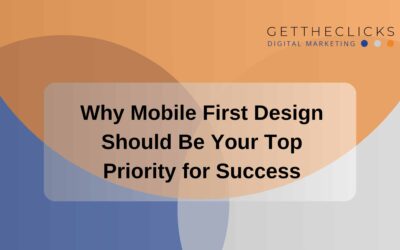Running an eCommerce business is all about setting yourself apart from your competitors. After all, there are tons of online businesses nowadays, so if you want to grow your business, increase your sales, strengthen your brand, and attract customers, you will need these essential eCommerce digital marketing strategies.
Essential Marketing Strategies for Your Ecommerce Business
Regardless of whether you’re just starting out or a more established business, you need sound marketing strategies to help your business prosper. This means staying up to date on marketing trends and techniques like these.
What Are Ecommerce Marketing Strategies?
The whole point of an eCommerce marketing plan is to capture the attention of your potential and current customers and help people find you more efficiently. Basically, eCommerce strategies are focused on this. Using one strategy or a combination of all strategies will all work to drive your brand in a unique way.
Ecommerce Website
This might seem obvious, but before you begin any of these methods, ensure that you have your website created and updated. Your website will be the first impression of your business, so you need to ensure that it is organized so that people can navigate easily.
This means making sure that people can navigate around and that your website is set up for accessibility. This also means ensuring that you have grabbed your potential customer’s attention with clear information, a smooth shopping experience, and more custom content.
Start by redesigning your layout, and check the flow of your website’s elements too. Then, go through your website yourself to make sure that you can find information with ease and that it’s completely clear overall—or better yet, get someone else to test out your website for you. They will let you know if it’s challenging to figure out your structure.
It’s also crucial to optimize your pages. Add in links so that customers can go from one place to another with just a click, and create various tabs that they will be able to click through.
Original Content
Speaking of content marketing, what you post on your website should be original. Blogs can also help build your brand’s credibility and authority.
You don’t need to only focus on blog posts either; having original content can be much simpler than that, and depends largely on what you need to share with your potential audience. Overall, you just need to publish content that is important for your target audience and matches your business. For example, videos, newsletters, or even something as simple as pop-ups or ads on your website.
You should at least have some content on your website, even if it’s just on your About page or when you’re answering FAQs. These should be original, and should be something that reflects the tone of your business.
This type of content will resonate with your customers, so make it compelling. At the bare minimum, make sure that you have the basic content and information that people need to know, and then describe your products for your customers. Don’t just make your descriptions the same boring descriptions that your customers see everywhere else.
Add some character to your content and fill it out with your personality. You have a great SEO opportunity here too if you link your products to other pieces of your website too.
Personalization
As you make your own content and further use other strategies like email marketing and marketing on social media, try your best to personalize everything. People enjoy feeling special and feeling like you understand them, so add in your personal touches like addressing people by name, sharing videos and pictures of your employees, and being transparent about your company.
SEO
Search Engine Optimization, or SEO, is significantly important in digital marketing. It’s all about optimizing your web pages for keywords that your audience will be searching for.
That’s because customers will always be searching using keywords on search engines in order to either find a product or answer a question. They will search using familiar words or phrases—and those are the words that you need included within your content. That’s what SEO is about at its core. As people search, the better your content matches, the higher your website will sit on the search results and the more customers you’ll get visiting your page.
You should also be updating your website constantly. Update your content to match current events, and ensure you have relevant and reliable content for your customers. SEO is a long term strategy that will pay off well by bringing a consistent flow of organic and targeted visitors to your website.
PPC
PPC, or Pay-per-click, essentially has three parts to it: the offer, the landing page, and the ad. You want all three to be working in harmony to catch and maintain your audience’s interest. Digital marketing isn’t only about getting customers to visit your page, after all, but about getting those customers to convert and make a purchase.
When someone clicks on an ad, the landing page must be something that keeps them around, delivering on the promise of the ad with an offer. This is what will prompt a visitor to convert to an actual customer.
With your initial ad, you will want to use relevant keywords. Pay attention to your ad copy and ensure that it’s enticing yet concise.
Don’t stop there, though. Pay-per-click is about converting visitors into customers, so when someone does click on one of your ads, you want them to stick around. That means that the landing page needs to be clear of distractions and anything unnecessary. Make it easy for your customers to find what they are looking for.
Google AdWords is an example of a PPC platform where you can get your target audience to visit your website through paid ads. This process is all about targeting specific keywords so that you show up in relevant searches, so it’s similar to SEO in that way.
You will have a better chance of showing up on Google with paid advertising and can choose to bid on a spot that allows your website to appear when someone makes a specific keyword search.
Retargeting
Retargeting is all about tracking customers who have already shown an initial interest (by clicking on your ad once, for example) and enticing them to come back by displaying your ads to them again as they use the internet.
As you try to re-engage and interact with them again, you have a better chance of converting them. The key to retargeting is to be specific. If your customer was looking at a certain product on your website, then retarget them with ads of that product. This will remind them of their interest in the product and hopefully, bring them back to your website to complete the purchase.
Social Media Marketing
You really can’t run your business these days without one or more social media platforms for people to find you on. Social media marketing will allow people to find you, allow them to communicate more effectively with you, and display your business in a public way.
With more customer interaction, you will boost the traffic to your website and therefore add more customers to your business. This is why it might be a good idea for you to spread your business across multiple social media platforms.
You can use different platforms, but the important thing here is to use the platforms where your target audience is. Cosmetic or beauty brands, for example, tend to have Instagram as their primary social media platform since that’s where their target audience likes to be. Or if short spurts of information are better, Twitter is a good choice.
Ensure that you keep up the tone and personality of your business throughout all of your social media. Consistency is important for your brand, so you want your customers to see that your communication style remains the same. This will boost the recognition of your brand and help to leave a real impression of your business. You don’t want your audience to be confused about your brand; conversely, you’d want your audience to easily recognize your brand no matter which platform they’re using.
By using social media, you might also be able to ask for feedback in an informal manner, which will help you better interact with your customers in the future. It’s easy to create fun polls on Instagram, for example, to see what your audience prefers. Brands have used such polls to gauge their audience’s interest in a product that’s yet to be released or to find out which color or design their audience tends to prefer.
These days, most social media platforms have robust and informative analytics so you can see what content works best or gives you the most reach on your social media account. You can then use that information to plan out the types of content your followers prefer. For example, videos or reels tend to be popular and well-received on Instagram, so if that’s what your analytics reflect, you should plan to create more engaging videos or reels for your followers.
Shoppable Instagram
As you use social media, you might consider setting up an Instagram page that your users can shop from directly. Basically, this means that they will be able to buy right there, so that they do not need to go to an entire separate page. The main point is that they won’t have time to hesitate on their order either.
Instagram is an especially good platform for this since it’s based on visuals and is known for people being able to interact very actively with their favorite brands. It’s extremely easy for your customers to purchase your products right off the platform without having to leave it and disrupt their scrolling too much.
Youtube
You may not think that Youtube is relevant to your business but with more than 2 billion active users, you could be missing out on a lot of potential business. Instead, use video to explain how to use your product or even interview happy customers. Even if you don’t want to show your face on video, engaging potential customers will still give your brand a good impression.
If your competitors don’t really use Youtube, then it’ll be an even better opportunity for your business to do something different. By showing up on Youtube, you could engage a whole new group of customers that you didn’t expect to.
Email Marketing
Everything is done online nowadays, so even though you can still send out mailers for your business, you should still put some time into email marketing. Email marketing is one of the most effective ways to reach people, although you need to be careful about what you put in your emails—you don’t want people to automatically delete your email without actually reading it, after all.
Start by providing helpful content. Valuable promotions will help entice your customers to open your emails too. Personalize your emails as much as possible to make your customers feel like they are actually interacting with you. Address them by their first names or ask them for specific feedback about a product they just bought.
You could also send emails updating customers on your business. Let them know how you’re doing and what kind of work you’re doing. They will feel more connected to your business if they know more about the business, so don’t hesitate to write about new products, features, and events.
As with everything in digital marketing, tracking your analytics is vital. It’s pointless to simply send out email after email without understanding how your customers are engaging with them. Always monitor your analytics and see what gives you the best results. You might find that a certain type of headline is more effective in enticing your customers to open your emails. Or perhaps, you might find that using certain words in your email title will lead to lesser deliverability due to your email being miscategorized as spam. No matter what, remember to look deeply into your analytics and always be ready to experiment and analyze the results to see what works best.
User Experience
Obviously, you want to ensure that your customer has a smooth user experience by making your website easy to navigate. That means having tabs that are easy for people to see, text that isn’t too small, and colors that aren’t difficult to see. You don’t want your customer to have to jump through multiple hoops throughout the buying process just to make a purchase.
Customers tend to exit too if you request too much unnecessary information on your purchase forms that they don’t want to spend time answering.
Mobile Optimization
People do a lot of their shopping on their phones, and there’s nothing more annoying than trying to squint at a website that just does not work well on a mobile phone. It’s crucial that you are able to optimize your website so that your tabs, layout, and content can be easily interacted with by all of your customers on mobile.
Enhance your website to ensure that everything is completely responsive to people on their phones. If it’s too hard to navigate your website, it’s likely that your potential customers will just decide to close your page and move on to a competitor that is easy for them to figure out.
You can even create content marketing techniques just to appeal to your mobile users specifically. For example, you may be able to market your products to people based upon their location when they check into your website. You can also add ads or search tools that people on their mobile devices can more easily access.
When you think about it, a ton of people will use their phone to do a search and make a purchase, or they will at least initially search your website on their phone while they’re out and unable to get to their laptop. This is why mobile optimization is a component that you can’t afford to neglect.
Influencer Marketing
Just like you utilize social media, you can have an influencer use their social media to help promote your products or services. Granted, this isn’t necessarily a low-cost option, but it can be a powerful and effective strategy when utilized well.
You should first begin by finding the type of people your target customers follow. For example, if your business revolves around makeup, you might consider talking to someone who regularly does makeup tutorials and seeing if you could send them your product. Some of these influencers might ask you for direct payments or commissions, and some just might want a set of free products.
What you end up paying in this scenario will depend on who you contact, but depending on your product, it might be worth it in the long run. Influencers often spend years building a loyal and engaged follower-base who trust their recommendations. Implementing a robust and effective influencer strategy can be the boost that propels your business and helps your brand gain some online fame.
Conclusion
You want to increase your customer base so that you can improve your bottom line and ultimately grow your business. That means that you need to deploy some of these ecommerce marketing strategies. They don’t need to be expensive, and can be something as simple as learning to manage your social media accounts, but in the end they will have a huge impact on your business in the future.





